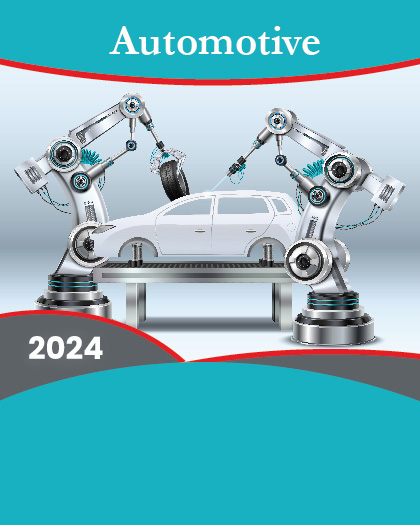Chapter 1. Executive Summary
1.1. Market Snapshot
1.2. Global & Segmental Market Estimates & Forecasts, 2017-2026 (USD Billion)
1.2.1. Hybrid Train Market, by Region, 2017-2026 (USD Billion)
1.2.2. Hybrid Train Market, by Propulsion Type, 2017-2026 (USD Billion)
1.2.3. Hybrid Train Market, by Application, 2017-2026 (USD Billion)
1.3. Key Trends
1.4. Estimation Methodology
1.5. Research Assumption
Chapter 2. Global Hybrid Train Market Definition and Scope
2.1. Objective of the Study
2.2. Market Definition & Scope
2.2.1. Scope of the Study
2.2.2. Industry Evolution
2.3. Years Considered for the Study
2.4. Currency Conversion Rates
Chapter 3. Global Hybrid Train Market Dynamics
3.1. Hybrid Train Market Impact Analysis (2018-2026)
3.1.1. Market Drivers
3.1.2. Market Challenges
3.1.3. Market Opportunities
Chapter 4. Global Hybrid Train Market Industry Analysis
4.1. Porter's 5 Force Model
4.1.1. Bargaining Power of Suppliers
4.1.2. Bargaining Power of Buyers
4.1.3. Threat of New Entrants
4.1.4. Threat of Substitutes
4.1.5. Competitive Rivalry
4.1.6. Futuristic Approach to Porter's 5 Force Model (2016-2026)
4.2. PEST Analysis
4.2.1. Political
4.2.2. Economical
4.2.3. Social
4.2.4. Technological
4.3. Investment Adoption Model
4.4. Analyst Recommendation & Conclusion
Chapter 5. Global Hybrid Train Market, by Propulsion Type
5.1. Market Snapshot
5.2. Global Hybrid Train Market by Propulsion Type, Performance - Potential Analysis
5.3. Global Hybrid Train Market Estimates & Forecasts by Propulsion Type 2016-2026 (USD Billion)
5.4. Hybrid Train Market, Sub Segment Analysis
5.4.1. Battery powered
5.4.2. Electro Diesel
5.4.3. CNG
5.4.4. Solar powered
5.4.5. Hydrogen powered
Chapter 6. Global Hybrid Train Market, by Application
6.1. Market Snapshot
6.2. Global Hybrid Train Market by Application, Performance - Potential Analysis
6.3. Global Hybrid Train Market Estimates & Forecasts by Application 2016-2026 (USD Billion)
6.4. Hybrid Train Market, Sub Segment Analysis
6.4.1. Passenger
6.4.2. Freight
Chapter 7. Global Hybrid Train Market, Regional Analysis
7.1. Hybrid Train Market, Regional Market Snapshot
7.2. North America Hybrid Train Market
7.2.1. U.S. Hybrid Train Market
7.2.1.1. Propulsion Type breakdown estimates & forecasts, 2016-2026
7.2.1.2. Application breakdown estimates & forecasts, 2016-2026
7.2.2. Canada Hybrid Train Market
7.3. Europe Hybrid Train Market Snapshot
7.3.1. U.K. Hybrid Train Market
7.3.2. Germany Hybrid Train Market
7.3.3. Rest of Europe Hybrid Train Market
7.4. Asia-Pacific Hybrid Train Market Snapshot
7.4.1. China Hybrid Train Market
7.4.2. India Hybrid Train Market
7.4.3. Japan Hybrid Train Market
7.4.4. Rest of Asia Pacific Hybrid Train Market
7.5. Latin America Hybrid Train Market Snapshot
7.5.1. Brazil Hybrid Train Market
7.5.2. Mexico Hybrid Train Market
7.6. Rest of The World Hybrid Train Market
Chapter 8. Competitive Intelligence
8.1. Top Market Strategies
8.2. Company Profiles
8.2.1. CRRC
8.2.1.1. Key Information
8.2.1.2. Overview
8.2.1.3. Financial (Subject to Data Availability)
8.2.1.4. Product Summary
8.2.1.5. Recent Developments
8.2.2. Kawasaki heavy industries
8.2.3. Siemens
8.2.4. General Electric
8.2.5. Hyundai Rotem
8.2.6. Toshiba
8.2.7. Hitachi
8.2.8. Toyota
8.2.9. Cummins
8.2.10. Alstom
Chapter 9. Research Process
9.1. Research Process
9.1.1. Data Mining
9.1.2. Analysis
9.1.3. Market Estimation
9.1.4. Validation
9.1.5. Publishing
9.2. Research Attributes
9.3. Research Assumption























